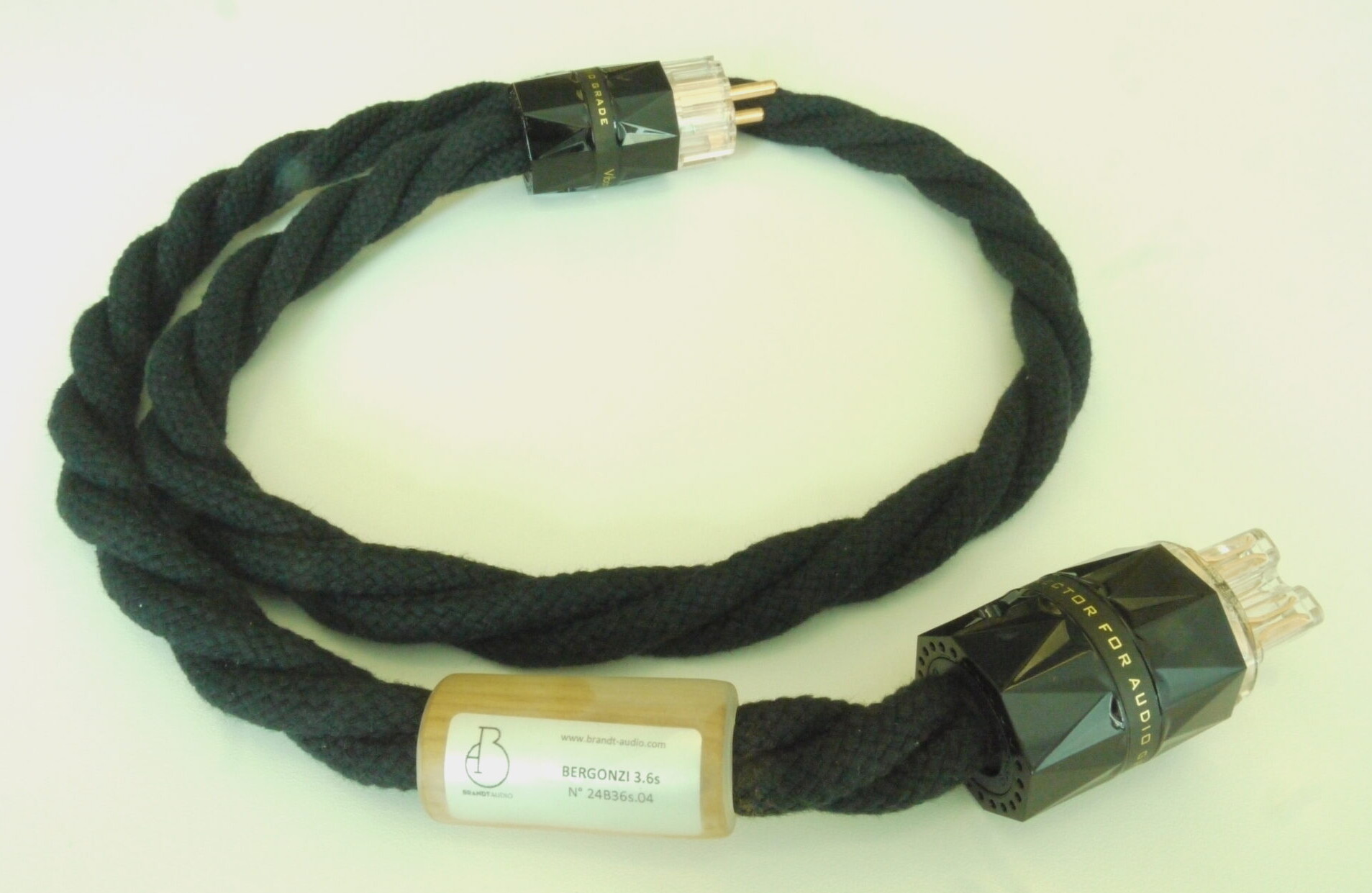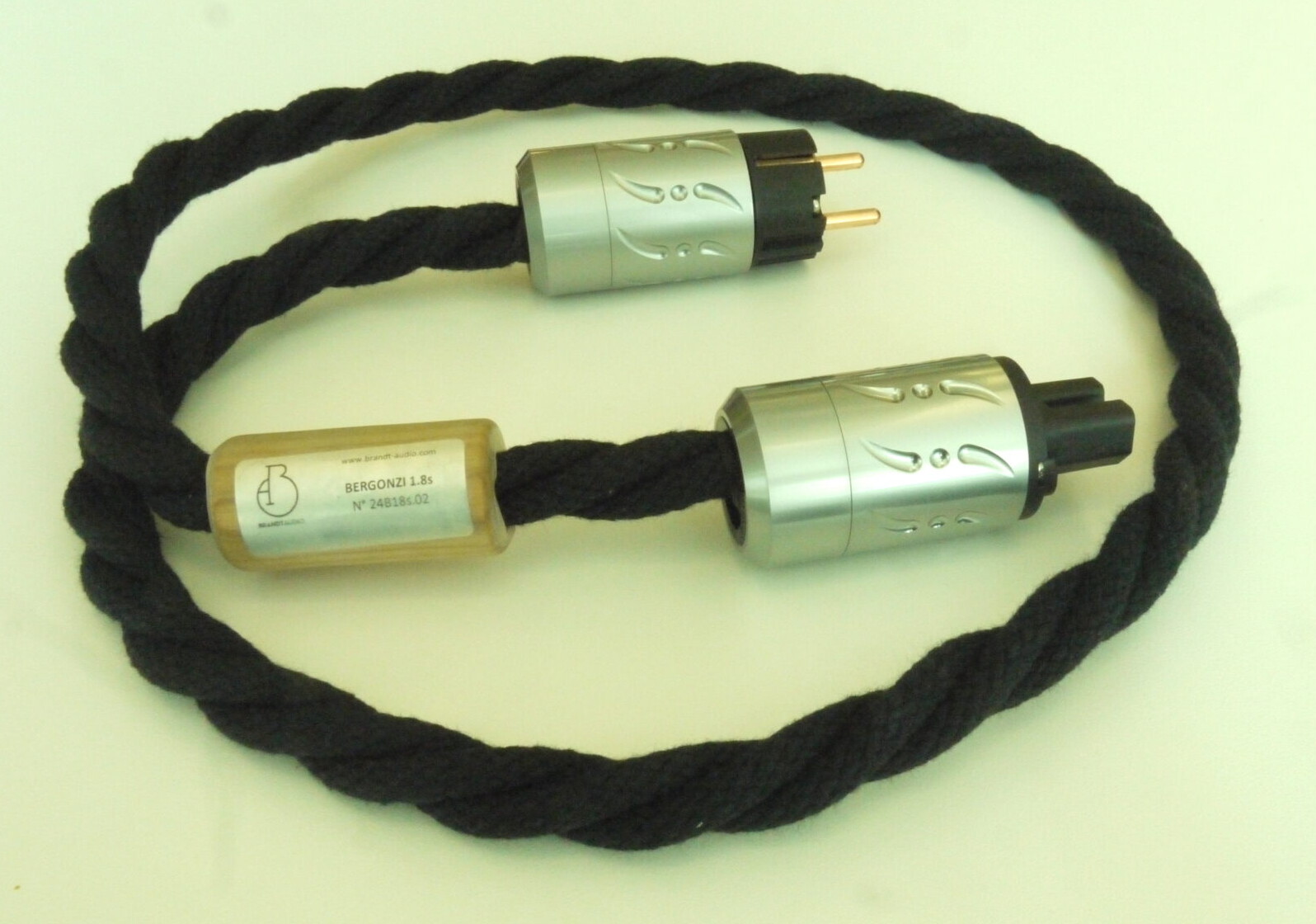
These cables are all about natural instrumental identity, expressed through tonality, texture and harmonics. All things that can be diminished if not destroyed by mechanical interference or an intrusive noise-floor. As a result, wire a system with the Brandt cables and you will quickly discover that it throws other aspects of system performance into stark relief – be that the dressing or support of the cables, or the grounding of the components. If you are budgeting for the Brandt cables, make sure you include provision for both mechanical and electrical grounding: rarely has the impact of the CH grounding spikes or parallel grounding systems been as obvious as it is in a system using these cables.
But once you have the set-up sorted, the results are wonderfully unforced, engaging and expressive. Playing Bertrand Chamayou’s Letter(s) to Erik Satie (Erato 5054197696442) the Brandt’s deliver a performance with clarity, poise and shape to the phrasing. Chamayou’s timing and placement of notes, the delicacy in his attack and note-weight, his use of decay and the spaces between the notes have a natural clarity and musical/emotional impact. The tonality and harmonic complexity of his piano are a natural extension of his playing. This is a beautifully sensitive performance and the Brandt cables deliver just that. But it’s also worth noting the complete absence of hardness or glare – and the part that plays in the naturalness of the instrumental presentation and tonality. It’s not that the cables are soft. They simply don’t add the hi-fi artefacts that so many others do.

Turn to Rachel Podger and Brecon Baroque’s complete recording of Vivaldi’s L’Estro Armonico (Channel Classics CCS SA 36515) for confirmation. The controlled energy and vitality in the playing is as impressive as the easy separation of the different stringed instruments, distinct in tonality and texture. The theorbos grunt and murmur convincingly, their character distinct from both cello and violone. When a baroque guitar enters the fray, it is both obvious and immediately identifiable. The harpsichord has body and layer on layer of vibrant complexity. These are real instruments with body and shape, real players and a real sense of performance. There’s no rounding in the attack or agility of the violin parts and no hesitation in their bowing and articulation. The Brandts deliver a performance – a performance that’s full of cut, thrust and contrast but ultimately, that’s all about connection.
That connected quality is about rhythmic integrity and a lack of slurring in the time domain. Just as the Brandt cables add no glare, they don’t pad the range either selectively or as a whole. There’s no ‘voicing’ in the bottom end to give a sense of added weight or substance, to impress with superficial impact but ultimately to hobble and slow the music with discontinuities and displacement. Instead they offer a natural sense of weight and musical mass that underpins, even reinforces, the music’s sure-footed sense of pace and timing. You hear it in the poised restraint of Chamayou’s playing, just as you hear it in the contrasting pace and vigour of the quicker passages as opposed to the slower movements in the L’Estro Armonico. But if you really want to appreciate just how rhythmically expressive and free of unwanted emphasis these cables are, reach for something that’s both driven and playful, like the complex sonic collage that is Vampire Weekend’s Father Of The Bride (Columbia/Sony Music 19075947362). Take the track ‘Bambina’ as an example: the languid guitar line, the insistent percussion, the driving rhythm section, overlaid rhythmic layers than come and go across the one and a bit minutes of this perfect pop microcosm, generating a crackling, catchy and rhythm mood that worms the song’s shifting tempo into your subconscious. The Brandts render the track not just catchy and slightly trippy, but downright danceable. You’ll get full value from the harmony vocals and duets that are also heavily featured on the album, the cables capturing the fragile relationship between what are not the strongest voices. In doing so, they also capture something that has its own inner beauty and emotional power. It’s not just the relationship between notes that the Brandts reproduce so faithfully: they reproduce the relationships between the musicians and within the music too. Whatever comes their way, be sure that these cables, far from obstructing the rhythmic or emotional core, will embrace it, even giving it a little push.

